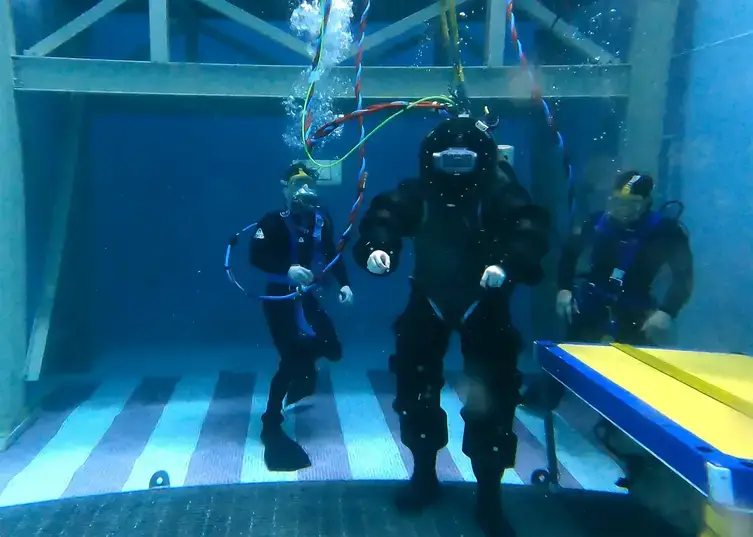Introduction:

Introduction
Greetings to our members and subscribers! At Americans for a Stronger Navy, we’re committed to promoting Peace Through Strength. In line with our mission, we’re excited to share a revolutionary new dive suit system, Deep Sea Expeditionary with No Decompression (DSEND), recently tested by the U.S. Navy. The DSEND system offers enhanced safety and flexibility for deep-sea divers, a crucial component in the Navy’s mission to secure the seas and protect our nation. We hope this story will inspire you to learn more about the innovations and advances in the Navy and join us in supporting our mission.
Summary:
The U.S. Navy has successfully tested the Deep Sea Expeditionary with No Decompression (DSEND), a revolutionary dive suit system that offers enhanced flexibility and safety for deep-sea divers. The suit system maintains steady internal pressure, reducing the risk of decompression sickness and allowing divers to work for extended periods at great depths. Sponsored by the Office of Naval Research (ONR) in partnership with other naval entities, the DSEND system is a game-changer for the Navy’s mission to secure the seas and protect the nation.
Innovative Design and Enhanced Safety Features:
The DSEND system includes a unique, hardened yet lightweight atmospheric dive suit featuring rotating, detachable joints for greater dexterity, flexibility, and maneuverability. The suit maintains one consistent pressure atmosphere, eliminating the risk of decompression sickness and reducing exposure to negative physiological effects associated with deep diving, such as cold and wet exposure.
Self-Contained Pressure Cocoon Increases Diving Time:
DSEND’s one-atmosphere environment encloses a diver in a stabilized pressure cocoon during the entire dive, allowing them to work at great depths for many hours and ascend without lengthy decompression. With a self-contained life support system, the suit system presents a solution to the limitations of traditional saturation systems used by the Navy, enabling divers to conduct harder missions by going deeper, executing faster, and operating longer.
Increased Flexibility and Reduced Fatigue:
The suit system features joints, grippers, and hand attachments made from novel materials that are strong, lightweight, and mirror the natural movements of human joints, reducing diver fatigue. The suit is also easier to don and remove and can be adjusted to diver size.
Realistic Operating Environment Testing:
During demonstrations at the Navy Experimental Diving Unit in Florida and NSWC Carderock Division in Maryland, DSEND divers completed various exercises, including pulling a mannequin from an aircraft fuselage, rigging wreckage for salvage, and traversing makeshift tunnels representing sunken vessels. In the next year, DSEND is set to undergo additional development, including at-sea demos in realistic operating environments.
Conclusion:
The DSEND system is a game-changer for the Navy’s diving missions, offering enhanced flexibility and safety features. By maintaining one consistent pressure atmosphere, DSEND eliminates the risk of decompression sickness and enables divers to work at great depths for many hours. We hope this story inspires you to learn more about the Navy’s innovations and advances and join us in supporting our mission to promote Peace Through Strength.

